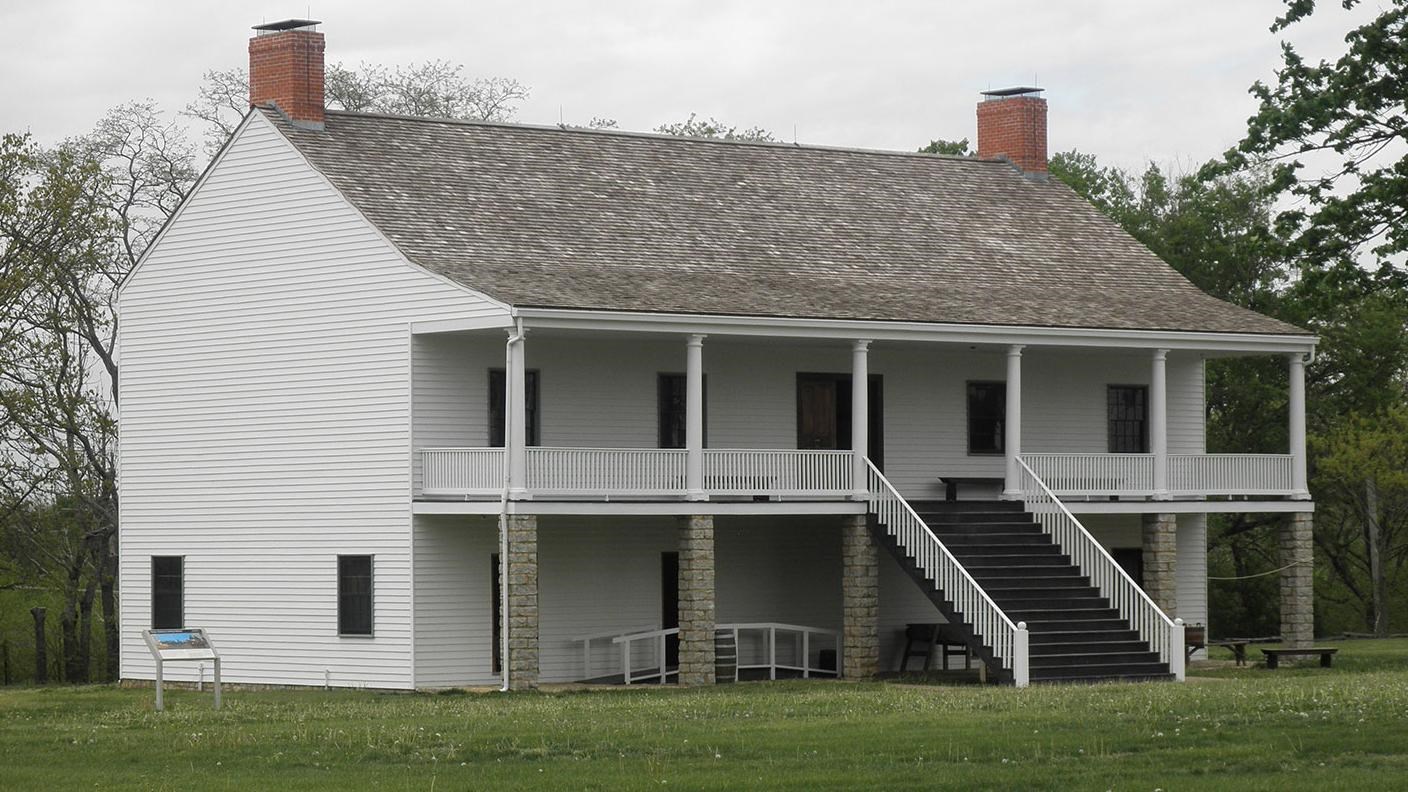Last updated: November 7, 2021
Place
Dragoon Barracks

NPS Photo
Historical/Interpretive Information/Exhibits, Trash/Litter Receptacles, Wheelchair Accessible
Each room of the dragoon barracks in front of you provided the soldier with necessities that enabled him to do his duty. The squad room gave him a place to sleep, the mess hall a place to eat, and the laundress quarters a place to get his clothes clean. Duty rosters generated at the company office kept him busy during the day. In the evening, soldiers could spend free time in the barracks playing cards or checkers, engaging in the sport of boxing, reading books, or writing letters home, although the latter two activities were limited to those soldiers who were literate.
Take a Virtual Tour of the Dragoon Barracks
Dragoon Barracks - Fort Scott National Historic Site (U.S. National Park Service) (nps.gov)
Mess Hall
A company of soldiers ate in the mess hall. The company was divided into four squads of 12 privates each. One source reveals that each squad sat at its own table; hence, there were four tables in the mess hall. By regulation, the tables and the mess hall had to be maintained to the utmost neatness. By design and upkeep, mess halls were not only efficient but also relatively sanitary places to serve the soldiers their meals.
One soldier's description of the mess hall is as follows: I was directed to follow, and found the mess room large enough to hold the entire company of boys at one sitting. There were a long pine tables and benches without backs, all scrubbed clean. At each boy's place was a tin plate, containing a small portion of stewed dried apples, a large stone china bowl filled with black coffee (sweetened but without milk) and a slice of bread about four ounces in weight. There were iron spoons, knives and forks, and a few dishes on the table containing pepper and salt.
Kitchen
There is an old axiom that an army travels on its stomach. The activity that went on in the kitchen and mess hall was critical to the soldier's health and survival. Lack of food would obviously lead to starvation, but also important was the quality of the cooking and the variety of the food. The cast iron kettles and skillets used in open hearth and Dutch oven cooking helped assure that the food was evenly heated and cooked. In theory, the rations of salt beef, salt pork, beans, rice, and vegetables from the garden should have made a palatable soup or stew. However, the quality of the food also depended on the soldier doing the cooking. As this was a rotated duty, the quality varied with the cooking skills of the private on duty that day.
Company Office
Many offices and businesses post daily work schedules as a means of guidance and organization. At Fort Scott, company officers (captain and two lieutenants) assisted by a first sergeant kept records in this office. They posted daily duty rosters, kept records of roll calls, musters, work details and other paperwork necessary to run the company efficiently and to track the daily activities of the soldiers in their command.
Laundress Quarters
Called the, "red armed women of the west," laundresses scrubbed their way into history as they took on the task of keeping the army their whitest and their brightest. The laundresses were the only offically recognized women on the post. Laundresses received fifty cents per month from each soldier she washed clothes for. Since a laundress at Fort Scott typically washed clothes for 15 men, her salary averaged $7.50 per month. She also received free medical services and rations from the commisary. Laundresses could get extra pay for mending, caring for officers' children and other non-specified services.
At Fort Scott, evidence indicates that the laundresses had rooms in the barracks.Those who were married might have stayed in tents with their husbands close to the riverbank, a situation which made their job easier. These rows of tents were often referred to as "soap suds row."
Married NCO Quarters
A married sergeant might occupy this room with his wife and children, if they were so endowed. While rather crowded, it at least afforded them some privacy. If more than one sergeant of the company were married, this room would likely be occupied by the one with the most seniority.
Squad Room
Two squad rooms or sleeping quarters occupied the upper floor of each barracks. Up to twenty-six soldiers (two corporals and twenty-four privates) could sleep in each squad room. Corporals slept in the small beds while the privates slept in the bunks, two per bunk. They slept head to toe. Soldiers were required to bathe weekly and wash their feet twice per week,
In addition to using it for sleeping, the squad room was used for leisure purposes. Soldiers played cards and checkers, read books, and wrote letters home, if they were literate. While the atmosphere could promote camaraderie, the crowded conditions often led to conflict.
Sergeants' Room
Rank had privileges, even among non-commissioned officers. Sergeants, who were responsible for training and discipline, had their own room and some amenities not afforded to the enlisted men. Those amenities included their own washbasins and privacy. Each company had four sergeants: while they potentially could all stay in this room, many often did not, either because they were married or were off on other assignments. Frequently, a sergeant could get this room to himself.
